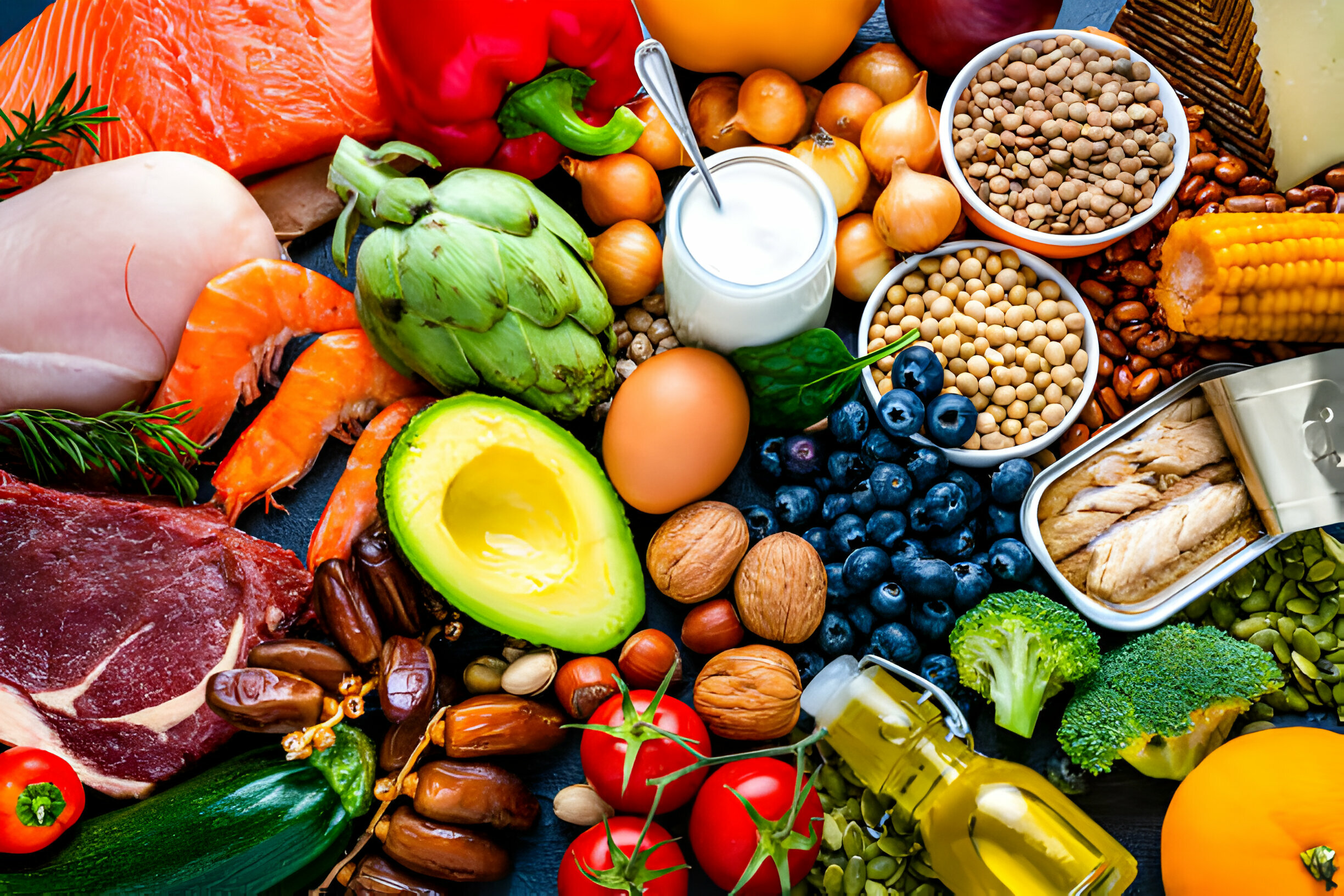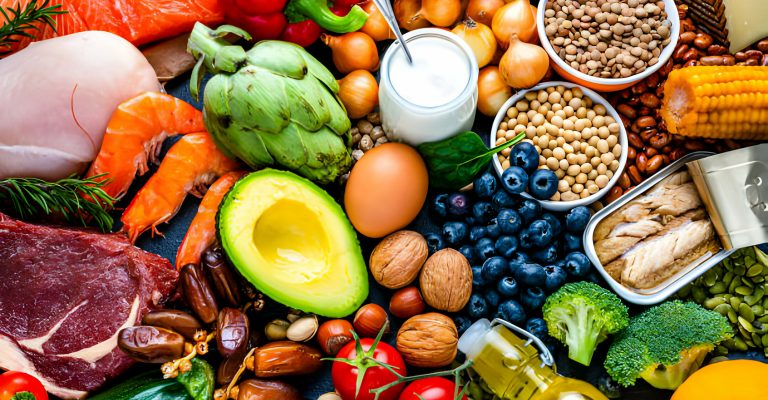A person who has sustained a spinal cord injury (SCI) has to come to terms with the fact that there will be forms of paralysis. Naturally, heavy tasks pose more difficulty and contribute more to exercising ability.
With this in mind, how can a person come up with ways to keep fit easily during such times? In this post, you will learn about foods that you can have to maintain your diet after suffering a spinal cord injury.
How Many People With Spinal Cord Injuries Actually Eat Right?
Studies have shown that a high percentage of people suffering from spinal cord injuries are malnourished. People with this condition usually eat poor-quality foods that are lower in fruit and vegetables.
This type of food has less variety that would provide the much-needed fiber and vitamins. Such people also favor consuming more refined meals, such as fast foods, which usually contain high quantities of salt, sugar, and fat.
For instance, people who cannot get the right food in the store because of mobility problems or who don’t have the money or transportation to purchase it aren’t likely to eat food that most people may only daydream of buying.
You cannot control some of these and other situations, but you can study good nutrition and boil it down to find strategies for eating better. For instance, you could delve into the world of healthier frozen dinners and snacks. Even small changes could work wonders for your overall health.

What is the Significance of Nutrition after a Spinal Cord Injury?
Many medical conditions and consequences may be imposed on people who have experienced an SCI beyond their willful control. These may include wasting away the muscular tissue due to continued lack of use and paralysis of the muscles or physiological processes.
These diet-based diseases can only be prevented if the person eats nourishing and balanced food. A diet might be one of those big causes; hence, prevention would only be possible if it is causing these different pots of trouble.
One of the big complaints that people have in the very early stages of their recovery is that they can’t do anything and still be active. When the metabolic activity in a person’s body slows down, it does not need the energy to keep going, which it does when a person is up, about, and active, most of the time in the form of calories.
Related Diseases
When one has taken meals that are rich in covering calories and not of any nutritional value, it is very much easier for one to gain weight since there may be no burning way in which they eat this food.
However, short bursting workouts that are manageable, if possible, perhaps under the eye of a physiotherapist or a rehab specialist, won’t just help build muscle and burn calories but will bring the related endorphins known to better one’s mood.
Other SCI individuals who have incurred SCIs and will not adhere to proper standards of diet will be at increased risk of getting overweight, acquiring diabetes, and increased cholesterol, which will further strain the cardiovascular system and lead to the constellation of other problems.
Signs and Symptoms of Ataxic Cerebral Palsy
Ataxic cerebral palsy manifests itself in various forms. Some of the most frequent signs are:
- Difficulty in coordinating body movements
- Issues with maintaining balance
- An unstable walk characterized by a broad stride
- Distinctive speaking patterns are often referred to as “scanning speech.”
- Shaking or trembling
- Struggles with depth perception
- Challenges in swallowing
Ataxic cerebral palsy is usually manifested by unsteady gait and a lack of coordination of movements. These symptoms are usually regarded as representing other diseases or developmental disorders.
Healthcare providers will more often than not be reluctant to provide a child with an evaluation of ataxic cerebral palsy before the child attains at least two years of age. Other symptoms, particularly in the baby and toddler stages, include slow eye movement and difficulty swallowing. Cases of difficulty in swallowing can also lead to acid reflux.
Additional Advantages of Healthy Eating

One would also have to make meal plans and decide all the way through what to eat, taking into consideration that people with SCIs are often faced with problems with their bladders and intestines.
One such problem involves the need to eat more foods with fiber and roughage, for example, meals with fresh fruits, vegetables, and whole grain products, because the digestive tract is not as active as usual because of an SCI. This all-natural remedy may, in fact, help people who are prone to indigestion or have constipation move the intestines.
They also affect people who encounter mobility problems or have to remain in a single position for a long time in a bed or a wheelchair. They appear as pressure sores when some weight is retained on the skin for a long period or when high pressure is placed on a small area for a short time.
When pressure is applied, the reduced blood flow results in the skin being deprived of the required nutrients, which results in the development of an ulcer.
This may occur more frequently in obese people or those with diseases that reduce blood flow, including Type 2 Diabetes. Eating a high-protein diet may help a person lower his or her risk of developing these sores, speed up the healing of those that already exist, and prevent a person from losing lean body mass. Examples of good-quality protein sources include fish, eggs, chicken, and beans.
Top Foods for Spinal Cord Injury Recovery
Some would have to be full of the proper nutrients needed for a healthy, robust spine. Improved spine health is likely to involve strong, healthy eating habits as the first order of business. The first strategy for improved health is to not eat toxic meals.
Dairy Products
Calcium also maintains the present bone density and grows new, strong bones. What is perhaps the easiest way to increase the dietary calcium without a supplement? Increase your dairy intake.
However, make wise choices regarding dairy products during that selection. The first pick should be all products that are rich in calcium. They form this class, which has yogurt, cheese, and milk.
Just because you are supposed to be getting more calcium doesn’t mean you should pig out on your favorite cheese. Watch other sources of dairy products, too, since they can be awfully high in fat and cholesterol. Other dietary sources of calcium include milk.
Fruits
Vegetables also need to be very colorful and vibrant. Quantity-wise, not too much, just as with dairy. Be also reminded that fruit is sugar, and an overdose of it, at least, unpleasantly affects your health. When eating fruit, be prudent since it is also very useful to your health. Do not get carried away by eating it.
Berries have also been proven to play a central key in your health vis-à-vis your back. They contain lots of different nutrients, which will assist your back in staying healthy and stronger. Add them to your breakfast, supper, lunch, and any other meal. Additionally, you can have them as a snack.
Avocados
Like them or don’t like them, avocados are stuffed with good things for your back. They have fats, the good fat your body wants and needs, including fiber and potassium. That adds so many pluses to their score. The whole body is thankful. Fat is a good kind, so it doesn’t hurt to have fatty foods, and not more than 70 grams a day makes them an ideal daily food.
Experiment with avocados in new recipes if you just don’t like this use. After all, avocado toast and its crunchy, creamy, sweet, and savory renditions, milling, soup, ice cream, topping for granola, porridge, smoothies, and more have graced the pages of magazines and, more likely than not, your plate.
You no longer have to content yourself with a mere spoonful to be spread from end to end, only to experience your salad or ketchup pot-like chipotle. Do you know what one of the most wonderful things about avocados is? They help to relieve back pain.
Plant-Based Proteins
Some plants could be a great source of the necessary proteins for your spinal column. The increasing meat that is to be sourced will not be based on animals. Avoid meat-based protein or anything that involves animals. Some plants also bring about inflammation.
Cooked lentils and beans are served with the same protein and fiber compared to quinoa. In addition to providing good amounts of protein, chia seeds, lentils, and beans are also superfoods. You also get fiber and different helpful minerals, vitamins, and antioxidants.
Herbs and Spices
Herbs and spices in a wide assortment can all improve the health of the spine. Turmericalias is a kind of spice and a common ingredient for most Indian dishes, particularly curry-based meals, that help tissue heal.
Cinnamon, rosemary, basil, and ginger are other herbs that may help reduce inflammation. Include these and the rest of the healthy herbs and spices in your cooking at every meal. You can also create delicious herbal tea. This tea not only increases the taste of the liquid but also strengthens the body’s defenses and reduces the chances of inflammation.
Salmon
Make sure to include salmon in your regular dietary program, assuming you are not one of those opposed to fish. The next great vitamin is the wonderful salmon, which provides lean protein and omega-3 fatty acids. Omega-3 Fatty Acids also support bone and tissue. At the same time, they help lower inflammation—just like leafy green vegetables do.
Bottomline
You can surely cook and blend those foods with different recipes. You will surely like it. Your food will taste different and benefit your spine, yielding a healthy and strong spine. So take care of your spine, eat healthily, and stay healthy.

